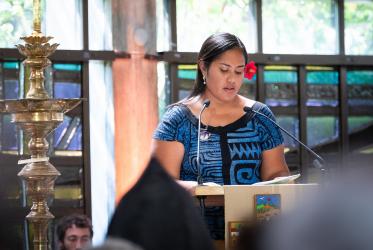Methodist Church of Samoa
When the first missionary arrived in 1835, some 2,000 Samoans were already following Lotu Tonga (Tongan religion). They worshipped in rough chapels, observing a few basic Christian practices taught them by a Samoan chief who had embraced Christianity in Tonga and on his return had become a missionary to his own country. In 1839, it was ordered that Methodism be abandoned, and the missionary left the country. Some Methodist Christians returned to paganism, and some went over to the Roman Catholic Church. But Methodism survived, and for 18 years it was served by Tongan and Samoan teachers. In 1856 the conference in Australia decided to resume the work in Samoa. Towards the end of the 19th century Samoa suffered badly from civil wars and political conflicts.
The beginning of the 20th century was marked by several developments. The church began to realize that its task was to be a sending church, not only a receiving church. It sought to become financially independent and to rid itself of illiteracy and ignorance. The political independence of Samoa in 1962 was followed by the autonomy of the Methodist Conference in 1964.
Since then notable changes have taken place. The number of ordained ministers has increased and lay people participate in the work of the church. Present programmes of the church extend to areas such as land development and home economics. There is a great evangelistic zeal and a growing enthusiasm for missionary outreach. The life of the church is based on the tradition and culture of the people. Education at all levels is a priority. The MCS has a primary school and three secondary schools, a technical college and Piula Theological College near the capital, where the ministers are trained. It also has very active women and youth departments. The church maintains close relationships with Methodist churches in New Zealand, Tonga, Fiji, the USA, the Caribbean, and with the Uniting Church in Australia.

